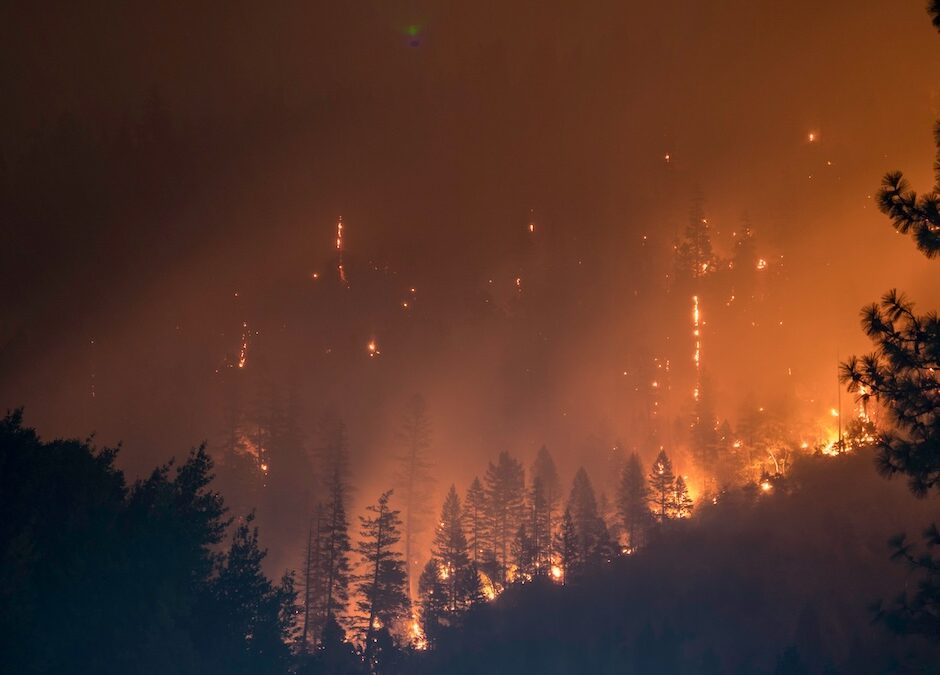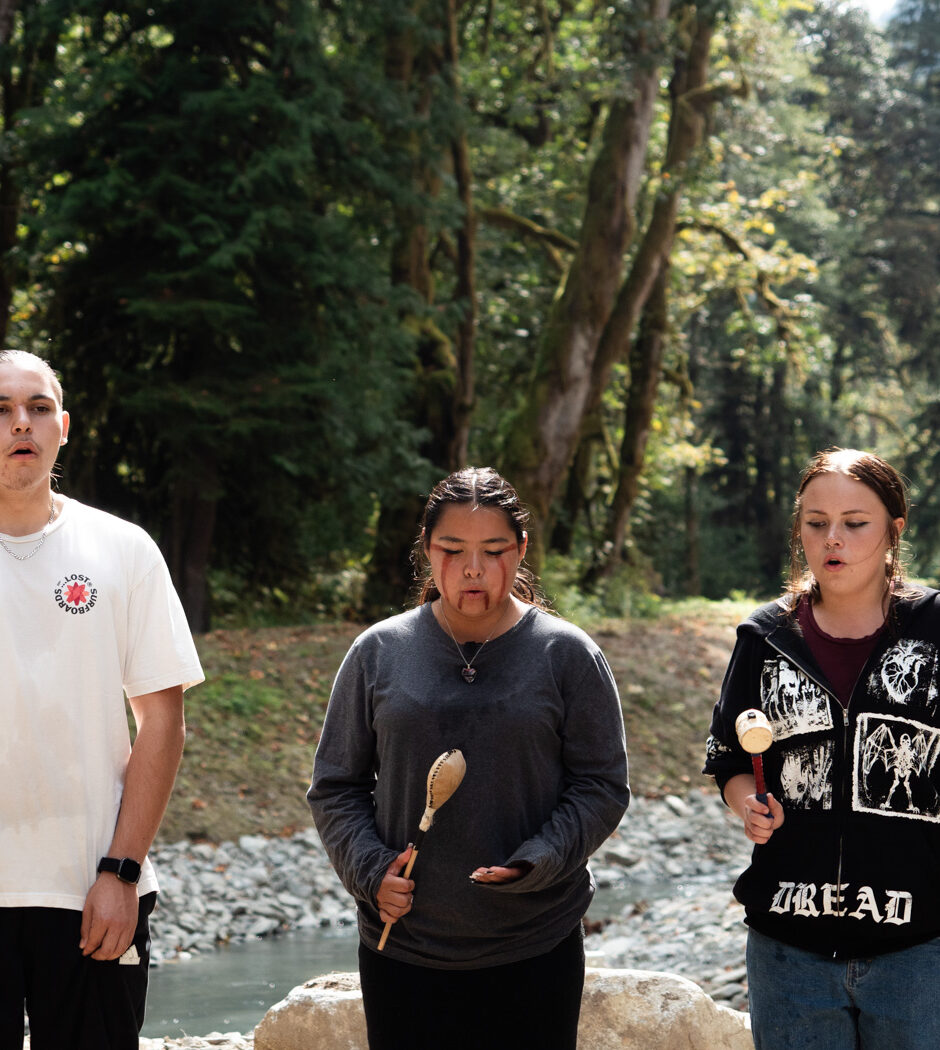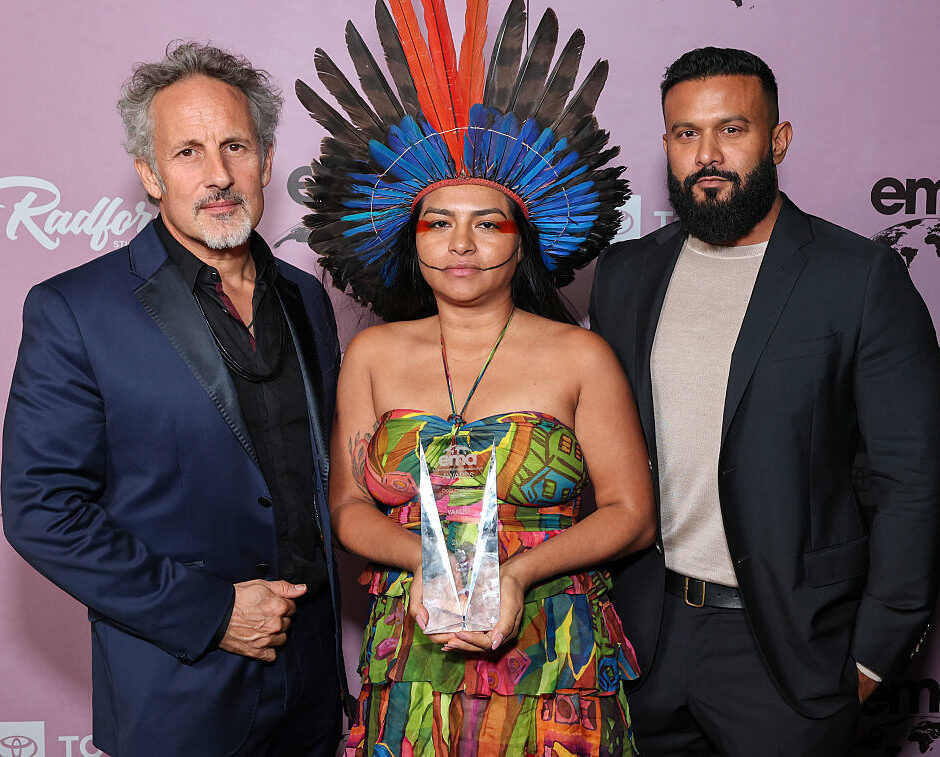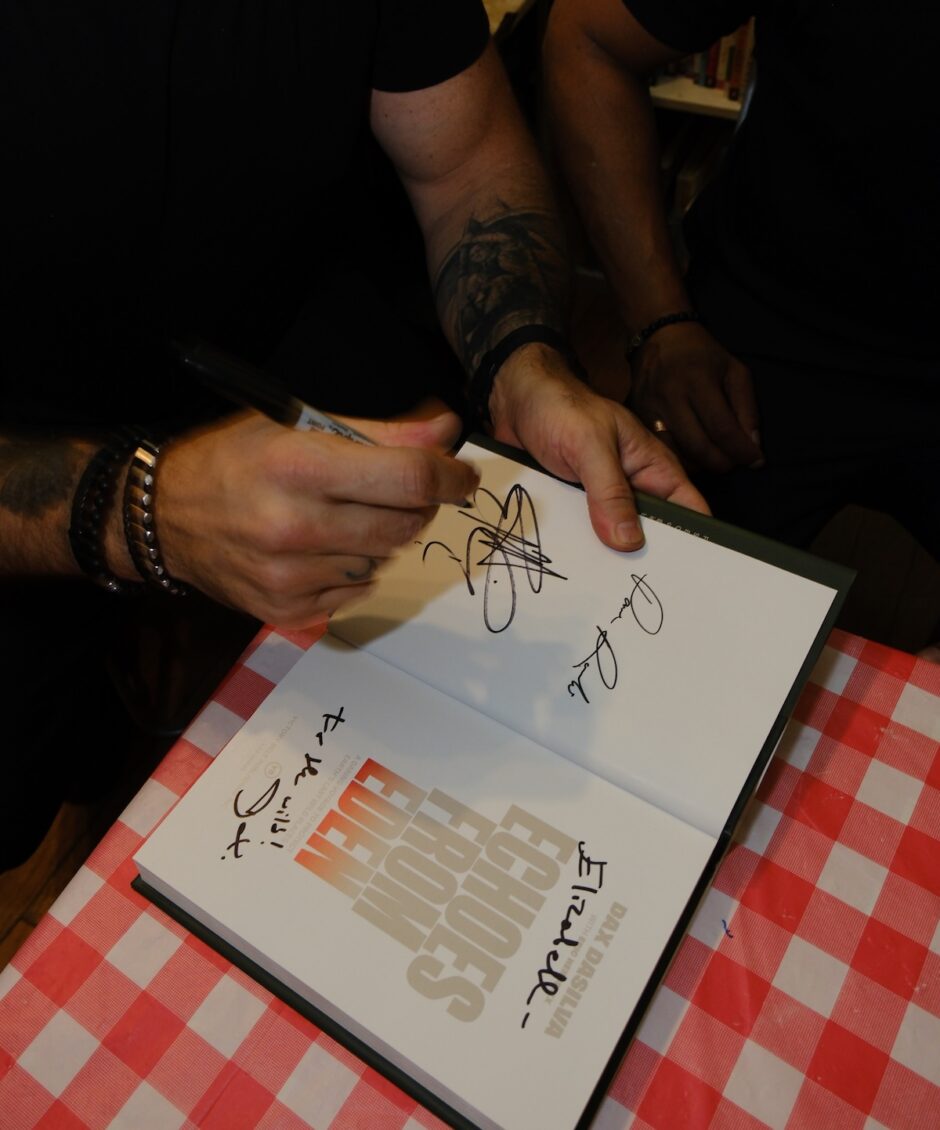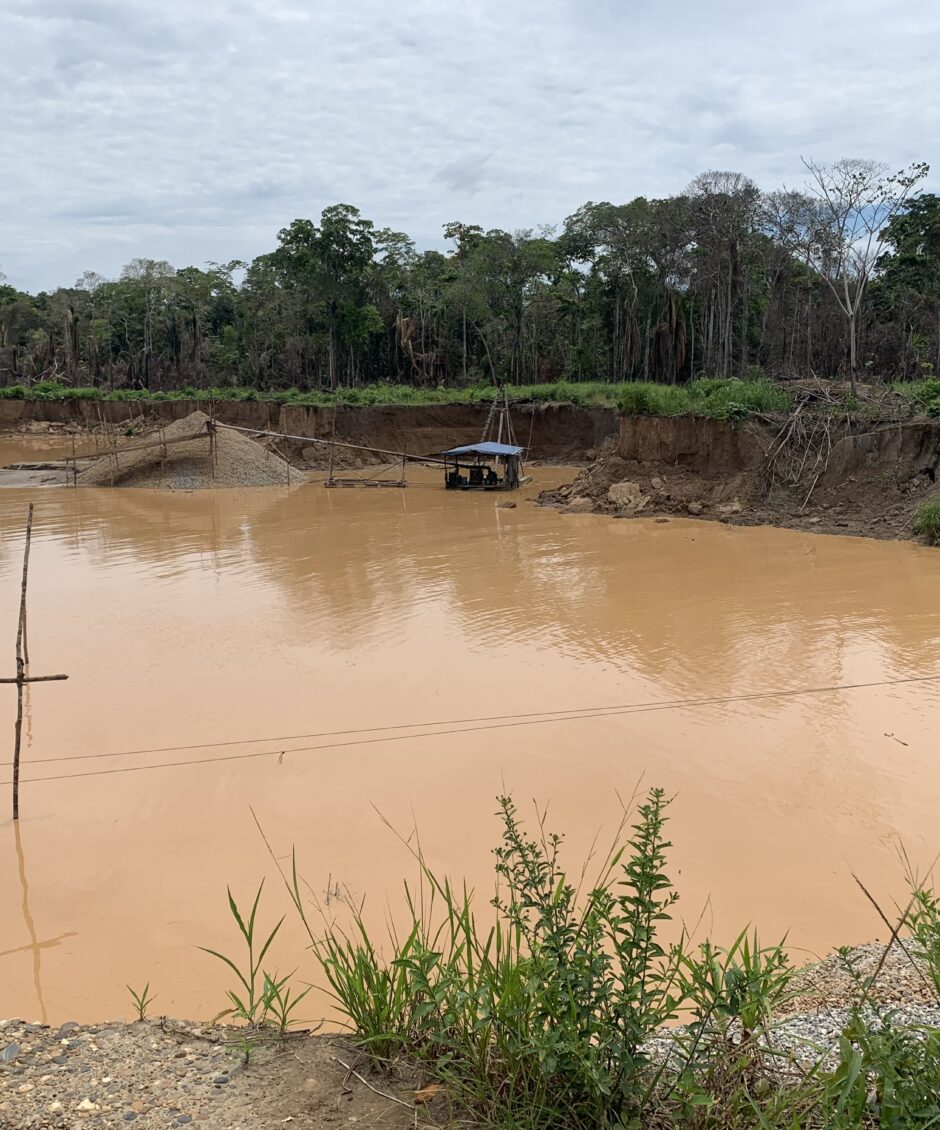Meet the Chef Whose Cooking Helps Safeguard Amazonian Biodiversity
Article
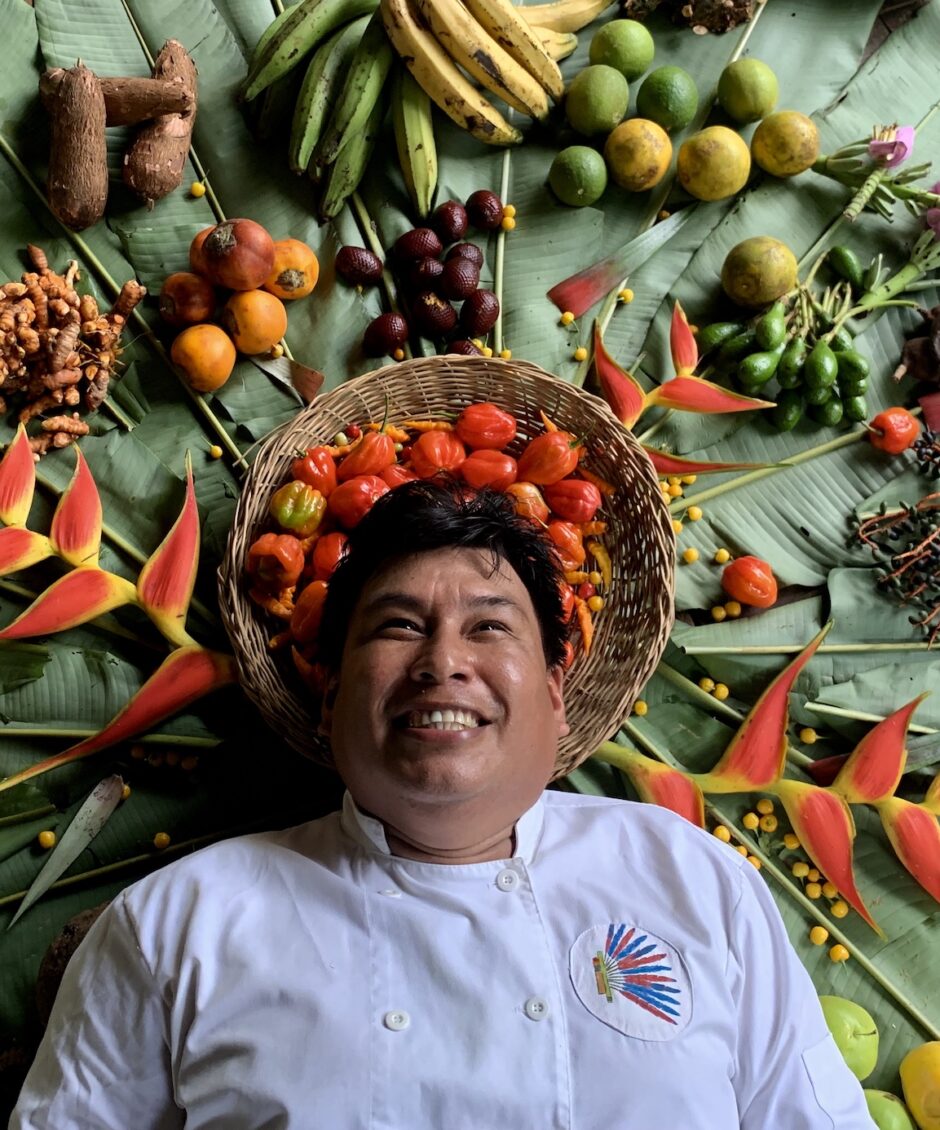
Roy Riquelme, a chef who grew up in the Madre de Dios region of the Amazon, helps protect local biodiversity and empower local communities from his kitchen. Paul Rosolie, Founder and Field Director at Junglekeepers, spoke with Riquelme about the link between cooking and conservation.
Author
Paul Rosolie
Topics
On any given day, while much of the world is at the office, Roy Riquelme is deep in the jungle, winding up some remote river on a dugout canoe. Take the raw expeditionary adventure of Indiana Jones combined with a Bourdainian love of flavors, new friends, and culture, and you’ll start to get the picture. What sets Roy apart, however, is that he’s from the jungle — a local Amazonian man on a singular mission to protect the place that he loves the most.
When I met Roy in 2011, I was taken aback. At first, I believed very little of what he said. How could it possibly be true? He seemed to not only know but have worked with every famous conservationist I could name, but he had been up rivers I could only dream of seeing. It was also hard concentrating around him — his hands are always working, and he knows exactly what a flex it is to maintain hard eye contact while his knife demolishes an onion into ten thousand perfectly uniform bits. The hard staccato on the cutting board makes you cringe for his fingers. The kitchen is his natural habitat, his canvass, the place from which he produces culinary art. To enter Roy’s kitchen is to enter a world of flaming pans, flashing knives, and a big infectious signature smile — and that is what has made Roy a bit of a local celebrity.
Roy’s cooking days began in the background of ecotourism lodges with the other staff whose job was to vanish while rich tourists were shown a watered-down version of the jungle He quickly outgrew these early beginnings, using nuts, berries, mushrooms, and spices from the wild jungle. Over time, word got out that Roy was capable of creating a kind of Amazo-neotropical Latino-American fusion that raised eyebrows; the kind of flavors that make you say: “Wow! What is this?” It was this ability to tickle tastebuds with novel flavors that began opening doors.
From the time he was a child, Roy knew well that the kitchen is where people connect, share stories, bond, and grow. As his renown for using Amazonian products with Peruvian cuisine grew, he began serving everyone: grandparents, children, tourists, scientists, loggers, politicians, and bands such as Maroon 5, KT Tunstall, and Dave Mathews Band. He has cooked for filmmakers from National Geographic and Discovery Channel and even helped prepare food for the delegation of Pope Francis.
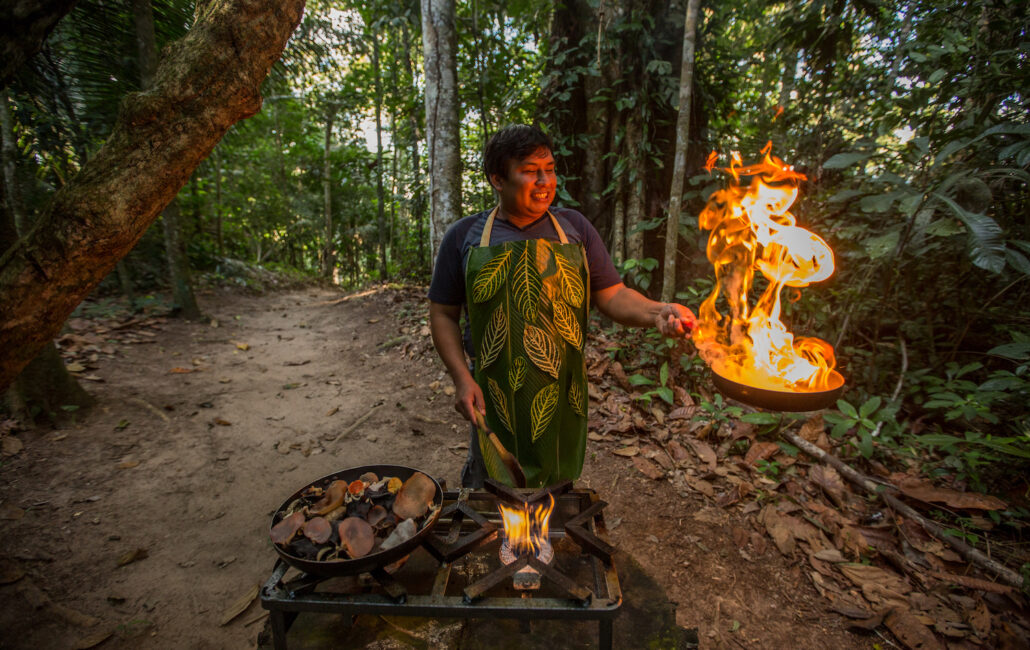
Today, Roy carries out sustainable cooking presentations all over the world. He has conducted workshops in the US, Italy, and his home of Peru, where he often travels to some of the most remote places on earth. It’s well known that if you need to go into the jungle for weeks on end, there’s really only one person who can handle the constant demands of starving, often sick, jungle-weary humans. I’ve seen Roy prepare an entire meal for 20 people on the side rail of a boat in the driving rain, but the locals in the region know that this is a man who cannot be bought.
Roy refuses to work for any enterprise that hurts the jungle. Loggers, miners, and the oil industry often offer him salaries far higher than he could make elsewhere, but he is committed to his values, work, and mission: saving the rainforest.
As a result, he’s become famous for his dedication and has worked with some of the most prestigious conservation organizations in the World: the World Wildlife Fund (WWF), Conservation International, Wildlife Conservation Society (WCS), and the Frankfurt Zoological Society, to name a few. Everyone in the region knows the best chef around is committed to protecting the treasures of the region: colorful macaws, drinking jaguars, and some of the most ancient trees on earth. The Madre de Dios region is known as the biodiversity capital of Peru, because of its location in the western Amazon, at the confluence of the Andes-Amazon interface. \
It is here, in his home, that Roy chose to help create Junglekeepers and launch Cocinando y Conservando, an initiative meant to help create a sustainable future through the community of the kitchen.

Paul Rosolie: Where did you grow up?
Roy Riquelme: I had the privilege of spending my childhood far from the city in the Alta Cachuela community, on the Madre de Dios river. This community is made up of my ancestors who came to work during the rubber boom and remained as ranchers on these lands … For this reason, I lived and spent my childhood in contact with the jungle, where my only world was nature, and where our distraction was playing in the forest and swimming in the river, together with my brothers and sisters — the other children of the community. Going to school was an adventure: we had to walk long paths through the jungle to reach the schoolhouse where children of all different grades shared the same teacher and room. [The jungle] became a very special place that I was able to experience in my childhood. These are the beautiful moments that I always keep in mind.
Around the time I finished elementary school, my family was forced to migrate to the city so I could continue my studies. The city was a very different world we had to adapt to. But [we] never forget the world where we came from.
How old were you when you realized you liked to cook?
Cooking has always been an essential part of life. It is fundamental to the way humans bond and interact. From the ancient caveman times all through history, our cultures are born around the campfire, the fruits, fish, and flavors of the land. I remember when I was 11 years old I began truly helping my mother in the preparation of our food. She was always known for her ingenuity and her style, and how she employed various local ingredients that my family grew and collected into what she made. That’s how my interest in cooking grew. I remember that when my parents were working full-time in agriculture, I would take on the responsibility of preparing food for the whole family, creating recipes with ingredients that I could find on the farm, in the forest, and our kitchen pantry. This is how my imagination and my creativity in making recipes have been explored since I was very young.
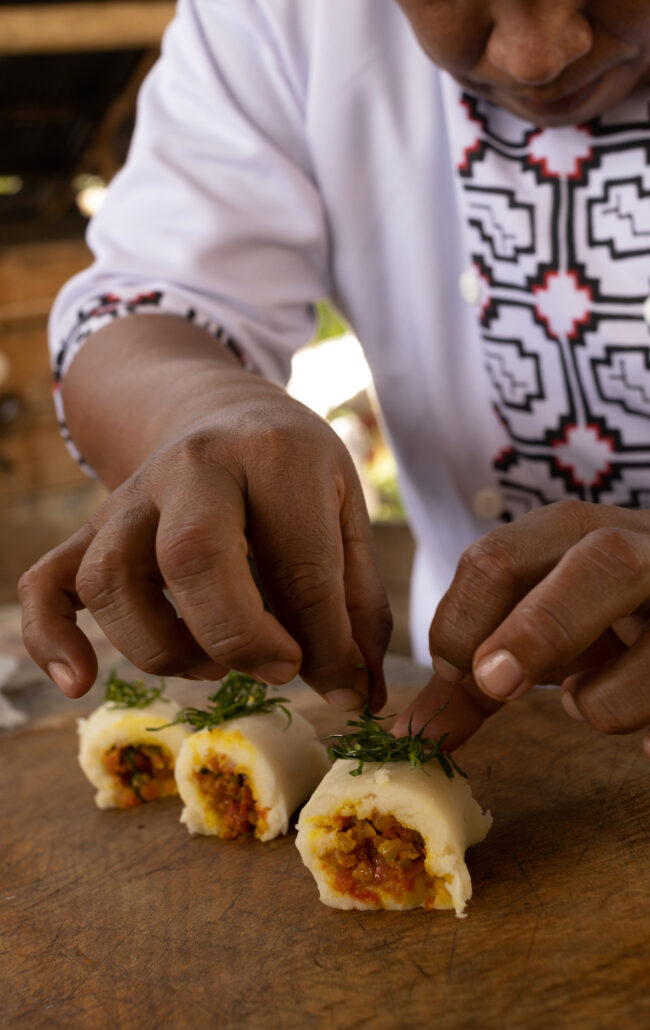
When did you decide that cooking and conservation could have the same goal?
I began to see the difference between village life and city life. There are so many things that people in the city just don’t have and don’t even know about. They all eat the same mass-produced products from the same factories, but the jungle is different. The forests offer us a diversity of foods and medicines to take to the kitchen. When one is aware of this, one knows how important it is to conserve all these ecosystems that help us to have food. I believe that if the forest is a part of our kitchen, then it is a part of our culture, and if it is a part of our culture, we will protect it more fiercely. In this way, the kitchen is a tool that helps to conserve the forests, seas, rivers, roots, fruits, seeds, flowers, and other local wonders we still have.
Can you give us an example of an Amazonian dish that you love to make?
In the Amazon, our main and preferred protein is fish, which comes from rivers and lakes. One of the dishes I love to prepare is [called] “Patarashca” and consists of cooking fish wrapped in Bijao leaves. We also make a delicious dish by cutting bamboo into a canister filled with fish and spices and cooking it over the fire. Another recipe I like to prepare and teach is a Brazil nut (called “Castaña”) sauce with forest nuts, mixed with spices that we grow in the Amazon.
How did you start working with Junglekeepeers?
I met my friends JJ and Paul in the kitchen while working for Tamandua Expeditions. I enjoy cooking for visitors from all over the world and Tamandua was a great environment. I have worked all over the Madre de Dios for world-famous scientists and researchers, as well as tourism companies and more. But these people were different — they really loved the forest as much as I did. For us, the forest is life, so I prepared food for the visitors they brought to visit and explore the jungle. Over time, we formed a good work team and they carried out their operations in the Las Piedras River. I began to work with two wonderful people who gave me the opportunity to get involved with Junglekeepers, and we began searching for ways to bring in support and start our dream of protecting the wild Las Piedras River.
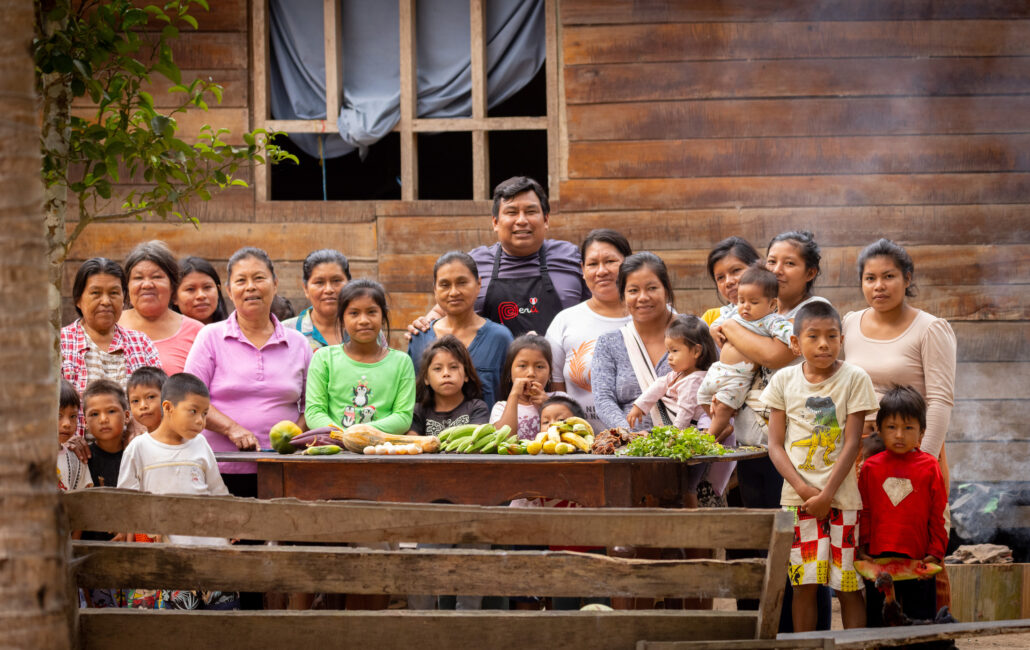
You have traveled across the Amazon and the world spreading your message. What are some of the most fascinating things you have seen?
In the Amazon, I have had the privilege of traveling to some of the wildest places on earth. Often, I am on a boat, winding up some remote jungle with conservation experts of one kind or another. On one occasion, we camped inside the forest. I was preparing dinner while the group explored the virgin forest, and noticed the monkeys surrounding our camp looking curiously at what I was doing in the kitchen. I was amazed when I saw one of them climb down a tree branch trying to reach to see what I was cooking. I remember very well that I was preparing mashed potatoes and managed to stay still so as not to scare them away and see what I could do. The monkey reached the spoon in my hand and with his little fingers and snatched some puree. Then he leapt up onto a branch to chew and enjoy. I thought he would leave, but my surprise was greater when I saw that he seemed to tell the others, and then other monkeys came down from the tree to do the same.
I also had the opportunity to travel outside my country, which not many people in my region have the chance to do. I have known cities where people never sleep — cities where the jungle is made of cement and modern things, where you can cross rivers and mountains through tunnels, and where time passes very quickly.
How can cooking help improve the lives of people living in remote communities?
Each community across the Amazon has its own culture and cuisine, but they also share a common theme: they all rely on the jungle as their main source of nutrition to live. Protecting and studying the nutritional properties that benefit the most isolated populations of the Amazon is a job that we must prioritize. Current governmental support in these communities often does not understand their culture [and] outside help often comes in the form of processed food that does not benefit these people long term. What I have learned after years of working with these people is that the best way to help them is to optimize what they already have access to — fish, crops, fruits, and other local food sources. This is food that they can survive on and offer to visitors and markets.
How can Amazonian sustainable food help protect the forest?
In the Amazon, we have forests that offer sustainable food, these are forests of palm trees, chestnuts, or Castañas, among other fruit and medicinal species. Making a sustainable kitchen provides a variety of opportunities to study both culture and biodiversity. Food collection management can help protect game species like deer, monkeys, tortoises, and macaws. Safe storage education can help them harvest naturally occurring fruits and vegetables to have year-round. The more people depend on the living systems around them, the more motivated they will be to protect them. That is why, I think, the people in other places have forgotten their connection to nature. Everything just comes wrapped in plastic in the supermarket. They never see it come from the earth, the trees, and the river. From the kitchen, deforestation due to global consumption can be made visible. We must educate consumers about these foods and generate value for the sustainable products offered by the Amazon rainforest.
What are your dreams?
I have many personal dreams, including owning a restaurant that makes delicious regional food, where people can enjoy Amazonian cuisine and celebrate our region and connect. But that is a big dream, and COVID-19 cost me all my life savings to care for my family. So, right now, my priority is to continue working for the preservation of the Amazon and its people, paving the way for other leaders to continue spreading our message.
If you could tell the world one thing, what would it be?
That we must leave selfishness out of our hearts. Let’s share teachings and unite to make a better world.
Credits
Credits: Mohsin Kazmi.
Topics
Article written by
Paul Rosolie
Paul Rosolie is an American conservationist and author. He is also the founder and field director of Junglekeepers. His 2014 memoir "Mother of God" details his experiences working in the Amazon rainforest in southeastern Peru.
Related
articles
America, Asia, News
What More Intense Wildfire Seasons Mean For People and the Planet
America, Project
Uniting Katzie Indigenous Knowledge and Science to Restore the Pitt River Watershed
Project
More articles
News
Age of Union Marks 4 Years of Global Conservation Wins As COP30 Commences in Brazil
News, Other
‘Echoes from Eden’ Book Tour Connects Readers to Urgent Stories of Conservation
Explainer, South America
In the Amazon, Gold Mining Leaves a Toxic Trail
America, Asia, News
What More Intense Wildfire Seasons Mean For People and the Planet
Film

